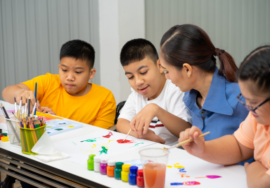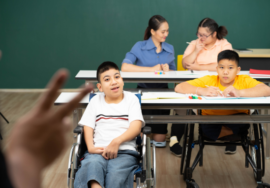
Embracing Neurodivergent Love Languages: A Guide for Families and Educators
Understanding and embracing neurodivergent love languages is crucial for fostering meaningful connections with individuals on the autism spectrum or with other neurodivergent conditions. Just as neurotypical individuals express and receive love in unique ways, so do those with neurological differences. Recognizing these differences and adapting communication strategies accordingly can significantly strengthen relationships, promote emotional well-being, and ensure that individuals feel seen, understood, and supported.
What Are Neurodivergent Love Languages?
Neurodivergent love languages are ways in which individuals with sensory processing differences, autism, ADHD, and other neurodivergent traits express and receive affection, appreciation, and care. These love languages may not align with traditional concepts such as verbal affirmations, physical touch, or gift-giving. For neurodivergent individuals, love may be communicated in distinct, personalized ways, and understanding these nuances is essential for families and educators.
Key Love Languages for Neurodivergent Individuals
- Acts of Service
For many neurodivergent individuals, actions speak louder than words. Helping with tasks, offering support during routine activities, or providing assistance with daily challenges can communicate care and love. This love language is particularly important for individuals who struggle with communication or processing emotions verbally. - Physical Space and Boundaries
Physical touch can be overwhelming or uncomfortable for some neurodivergent individuals, so respect for personal space and boundaries is vital. While others may thrive on hugs or hand-holding, those with sensory sensitivities may prefer minimal physical contact. Ensuring that individuals can communicate their comfort levels and respecting their personal space is a key aspect of neurodivergent love languages. - Quality Time
Spending one-on-one time in a quiet, calm environment can be a powerful way for neurodivergent individuals to feel valued. Shared activities, such as playing a favorite game or engaging in an interest, can create strong emotional bonds. It’s essential to note that quality time doesn’t have to involve traditional social interactions; even parallel play or shared quiet moments can be meaningful. - Visual or Written Communication
For some neurodivergent individuals, visual cues or written notes are more effective than verbal communication. Love can be expressed through visual symbols, written affirmations, or even drawings. These alternative forms of communication can be especially helpful for non-verbal individuals or those who find verbal expression difficult.
How Families and Educators Can Support Neurodivergent Love Languages
Families and educators can play an instrumental role in fostering a supportive environment by observing the individual’s preferences and adjusting their approaches accordingly. Creating open communication channels, whether verbal, written, or through actions, helps ensure that neurodivergent individuals feel loved and understood.
Understanding the specific needs and preferences of neurodivergent individuals allows for a deeper connection and promotes trust. It is important to be patient and flexible, recognizing that love may not always look the same for everyone, and what works for one person may differ for another.
Conclusion
Embracing neurodivergent love languages requires a willingness to move beyond conventional expressions of affection and adapt to the unique ways that neurodivergent individuals communicate love and care. By acknowledging and honoring these diverse expressions of love, families and educators can create more inclusive, compassionate environments that support the emotional well-being and personal growth of neurodivergent individuals, helping them feel valued and understood.




